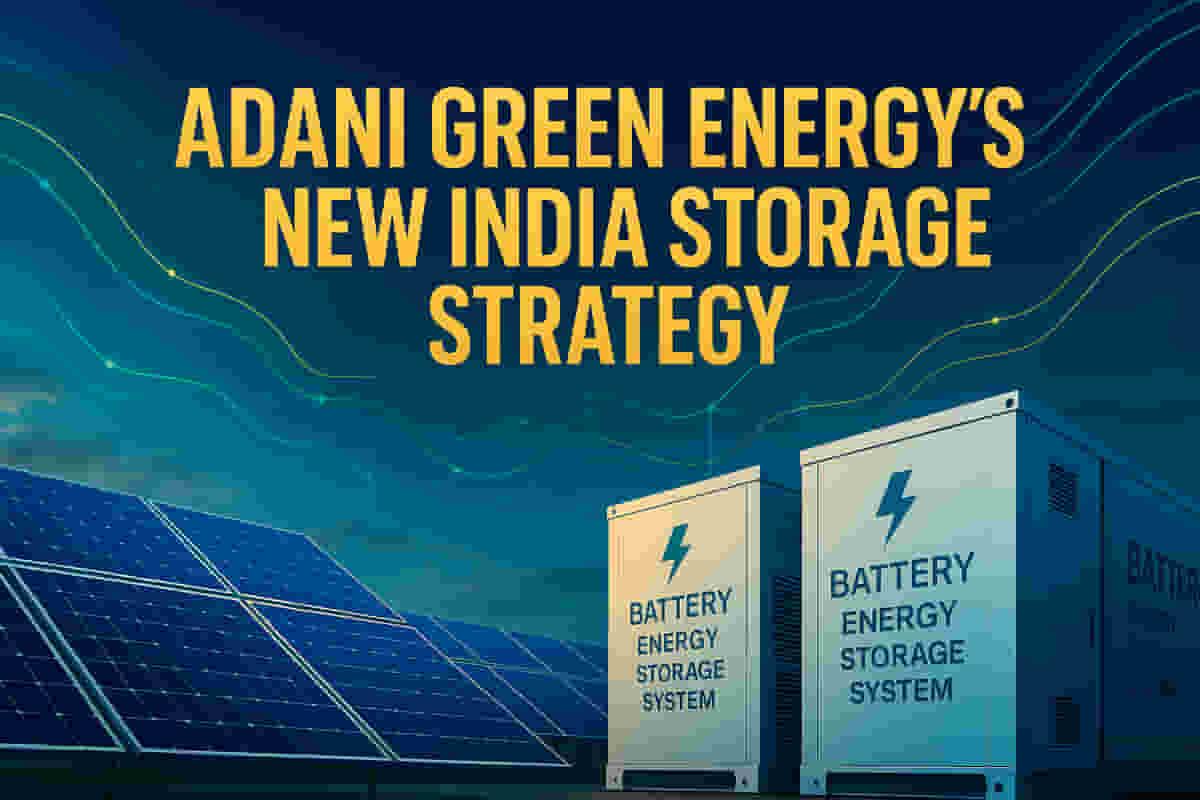Adani Green Energy to Launch India's Largest Battery Storage Strategy
Renewables
|
30th October 2025, 6:36 AM

▶
Stocks Mentioned :
Short Description :
Detailed Coverage :
Adani Green Energy Limited is set to revolutionize India's renewable energy landscape by developing Battery Energy Storage Systems (BESS) on a scale never before seen in the country. The company's CEO, Ashish Khanna, announced plans for a comprehensive national strategy to accelerate the next phase of renewable energy growth, emphasizing the critical role of energy storage.
Khanna explained that Adani Green is uniquely positioned due to its existing solar power assets and proprietary land banks, which are ideal for installing BESS. This strategic advantage allows the company to seamlessly integrate storage solutions with renewable generation. The future of renewables, according to Adani Green, will heavily depend on energy storage systems like BESS and Pumped Hydro Storage Projects, similar to how solar modules evolved.
Technological improvements and decreasing costs are making BESS increasingly viable. Adani Green is collaborating with major manufacturers to play a significant role in this evolving sector. BESS is crucial for grid stability as it stores excess energy during low demand and releases it during peak times, providing essential services like frequency regulation and voltage support to prevent outages.
The shift towards storage is already visible in recent renewable energy tenders, which increasingly favor peak-power and round-the-clock (RTC) power solutions incorporating storage, rather than pure solar or wind projects. Adani Green is also developing over 5 gigawatts (GW) of pumped hydro storage projects across several Indian states and is on track with its execution, having completed 57% of its first 500 MW project in Andhra Pradesh.
Impact This initiative is expected to significantly enhance grid stability, facilitate higher integration of renewable energy sources, and potentially reduce energy costs by improving supply-demand balance. It positions Adani Green Energy Limited as a leader in the crucial energy storage sector for India's green energy transition. Rating: 9/10
Hemantics Explainers: Battery Energy Storage Systems (BESS): These are systems that store electrical energy generated from sources like solar or wind power and then release it when needed. They help balance the power grid by storing excess energy when demand is low and supplying it during peak demand periods. Pumped Hydro Storage Projects: A method of storing energy using water. During times of low electricity demand, excess power is used to pump water from a lower reservoir to an upper reservoir. When electricity is needed, the water is released back down through turbines to generate power. Frequency Regulation: The process of maintaining the balance between electricity supply and demand in real-time to keep the grid's frequency stable. This is essential for the reliable operation of power systems. Voltage Support: Maintaining the voltage levels within acceptable limits on the power grid to ensure the smooth functioning of electrical equipment and prevent disruptions. Peak-Power Tenders: Government or utility auctions where developers bid to supply electricity during specific high-demand periods (peak hours), often requiring storage solutions. Round-the-Clock (RTC) Power: A renewable energy supply that guarantees electricity generation 24 hours a day, typically achieved by combining generation sources with energy storage.